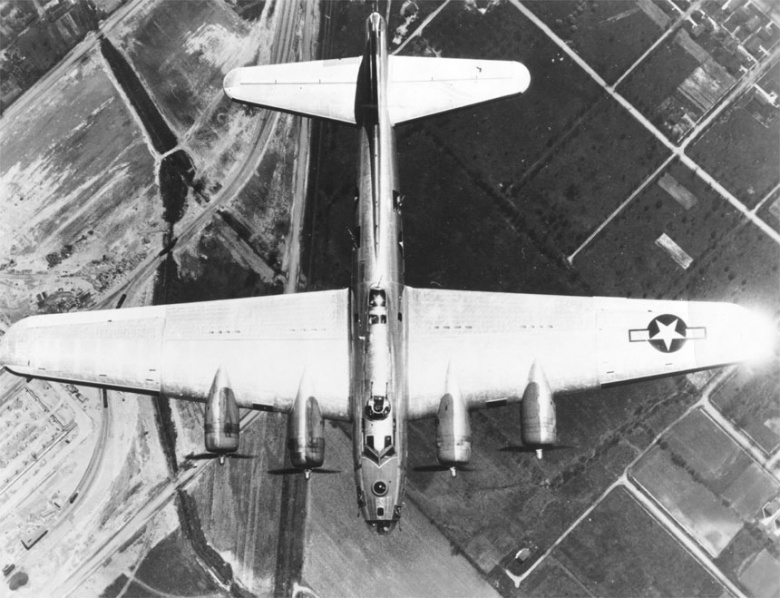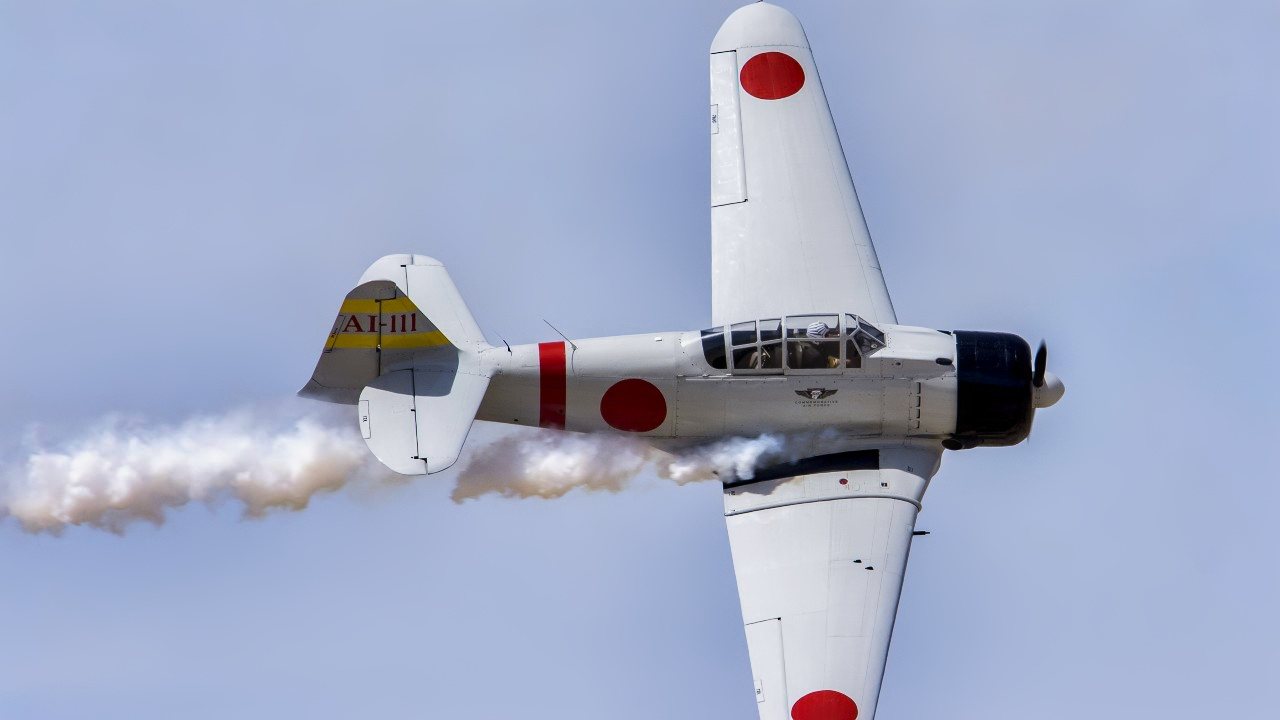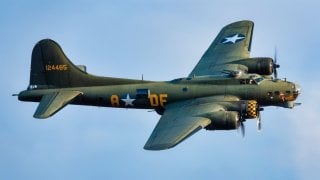The Boeing B-17: The Bomber that Made Hitler Sweat
The new Apple+ series "Masters of the Air" showcases the WWII aviators of the 100th Bomb Group and their iconic Boeing B-17 bombers.
Summary and Key Points: The new Apple+ series "Masters of the Air" showcases the WWII aviators of the 100th Bomb Group and their iconic Boeing B-17 bombers.

-Developed in the 1930s, the B-17 played a crucial role in the daylight strategic bombing campaign against Germany.
-Despite initial production challenges, the B-17 became famous for its resilience and effectiveness, earning a significant place in aviation history.
-Today, 45 B-17s survive, with 10 still airworthy, including the renowned "Memphis Belle."
The Boeing B-17: From WWII Legend to Apple+ Series Star
The new Apple+ series Masters of the Air tells the story of World War II aviators of the 100th Bomb Group of the 8th Air Force. A follow-up to Band of Brothers and The Pacific from Steven Spielberg and Tom Hanks, the miniseries is already noted for its gritty realism.
The aircraft, notably the Boeing B-17 bombers, are also as much the stars of the miniseries – which debuted on Friday – as Austin Butler, Callum Turner, and Anthony Boyle.
The Boeing B-17, developed for the United States Army Air Corps (USAAC) in the 1930s, was primarily employed during the Second World War as part of the daylight strategic bombing campaign against German industrial, military, and civilian targets. It has become one of the most famous aircraft ever built, and one of the most important bombers in history.
Notable B-17 Bomber Facts
One point that isn't noted in the Apple+ series is that the aircraft was seen as quite a risk for Boeing when its development began. The company may be an aerospace giant today, but that certainly wasn't the case in the early 1930s when Boeing – a company with just 600 employees – competed with Douglas and Martin for a contract from the United States War Department to build 200 bombers. Boeing's executives put everything on the line, investing $432,034, equivalent to about $9.2 million today – at a time when the country was in the midst of the Great Depression.

However, the Model 299, which was a cross between the Boeing 247 passenger airliner and the experimental XB-15 (Model 294), was truly a leap forward in aviation design.
Record Breaker
Just weeks after making its first flight, the Model 299 began to break records – and on August 20, 1935, it made a 2,100 mile (3,380 km) non-stop flight from Seattle to Wright Field in nine hours with an average speed of 232 mph.
However, after 40 flight hours, the sole prototype crashed after its elevator gust-lock was still engaged during landing. As a result, Boeing only secured a contract for 13 YB-17s, instead of the expected 60. Rival Douglas then received an order for 133 aircraft, which became the B-18 Bolo.
Down to South America
Although Boeing failed to secure a larger contract, development continued and the aircraft kept breaking records. That included a goodwill mission to South America, where six Flying Fortresses took off from Miami and flew to Buenos Aires in 28 hours with just one stop in Lima, Peru. The return flight proved to be equally impressive and all six aircrews were awarded the prestigious Mackay Trophy for the "most meritorious flight of the year."
The Navy Didn't Like the B-17
Because the B-17 had been designed with coastal patrol duties in mind, U.S. Navy officials feared that the USAAC might take on a maritime patrol role. As a result, there was a push from the Navy to scale down the production – reducing the first series model, the B-17B to just thirty-nine aircraft.
The situation didn't get better after May 1938, when to prove the B-17's capabilities, three plans from the 2nd Bombardment Group set out to intercept the Italian passenger liner Rex, 700 miles (1,125 km) offshore.
Even though the weather was bad, the B-17 Flying Fortresses successfully intercepted Rex after a four-hour flight. The B-17s even made several passes over the ship for still and motion picture photography. The U.S. Navy protested that the flight was not coastal defense, but the U.S. Army made the most of the flight and heavily publicized it in newsreels and newspaper stories.
However, the War Department curbed further expansion of the Air Corps and its roles and even restricted all Air Corps aircraft to operating within 100 nautical miles (190 km) off the coast. It wasn't until January 1939 – with war clouds on the horizon – that U.S. President Franklin D. Roosevelt issued a public statement calling for the expansion of the Air Corps. Gen. George C. Marshall, who soon moved up from the head of the War Plans Division to be the U.S. Army's chief of staff, received personal instruction on the capabilities and strengths of long-range bombers from new Air Corps chief Gen. Henry H. Arnold.
Fighting the Isolationists
It wasn't just the U.S. Navy that was initially opposed to the Flying Fortress. Isolationists were very much in political control in the late 1930s, and funding was restricted for the arms services. In addition, the War Department doctrine did not allow for aircraft to be classified as offensive weapons.
Moreover, there was thought that there was no need for a long-range strategic bomber. Fortunately, the same argument was being made in Nazi Germany at the time – and Germany never did produce anything like the B-17.
Just Over a Dozen in Service When WWII Started
By the end of the Second World War, 12,731 B-17 Flying Fortresses were built – but just thirteen were operational when Germany invaded Poland in September 1939. The United States was given the necessary time to see the need for such a bomber – and the B-17 went on to prove it was the right machine to get the job done.
First U.S. Combat Loss of the War
A dozen B-17 Flying Fortresses were on their way to Pearl Harbor on the morning of December 7, 1941, when they came under attack from Japanese A6M "Zero" fighters – one of those bombers was shot down, becoming the first American combat loss of the conflict. One other was damaged on landing.

Those were not the only B-17s to be lost that day. At least half of the thirty B-17s on the ground at Pearl Harbor were also damaged beyond repair. An additional 30 were wrecked on the ground in the Philippines on the same day.
Used in Every Theater of Operations
While Masters of the Air is focused on the bombing missions over Europe, the B-17 proved to be a versatile aircraft and it was used in every theater of World War II, but won immortality for their role in the epic daylight battles against the Luftwaffe. Tragically, more than 47,000 U.S. 8th Air Force crewmen were killed in those daylight raids over Germany.
The B-17 played a crucial role in transforming the United States Army Air Force into the devastating, destructive power it became in the latter stages of the war. At the height of the war in Europe, B-17s occupied more than 25 airfields in the south and east of England.
Quite the Sight
As noted in the second episode of the Apple+ series, the Norden bombsight with which the B-17 Flying Fortress was equipped was considered the best in the world. It was even reputed to be able to "drop a bomb into a pickle barrel" from 13,125 feet (4,000 meters).
Truly Young Men
The men who flew the bombers in the combat operations were truly of the "Greatest Generation," and it was rare that a B-17 pilot was older than 30. In fact, most of the men who took the big bombers into the skies over Germany were barely in their 20s!
The normal crew complement was nine, but occasionally eight or 10 would make up the crew. The bombardier was in the extreme nose, while the pilots were seated side-by-side with dual controls. The radio operator's position was midship, while gunners were located in the two turrets, in "waist" positions on either side of the fuselage and in the extreme tail.
Not the Most Produced Bomber of WWII
While the B-17 may be the most famous bomber of the Second World War, it wasn't the bomber that was produced in the largest number. A total of 12,731 B-17s were produced while 18,482 Consolidated B-24 Liberator bombers were built by the end of the war. However, both heavy bombers still developed a well-earned reputation for being the workhorses of the USAAF.
Today, there are reported to be forty-five surviving B-17s, of which thirty-eight are in the United States. Ten are airworthy. Among the most famous of the surviving aircraft is the "Memphis Belle," which is currently on display at the National Museum of the United States Air Force.
Author Experience and Expertise: Peter Suciu
Peter Suciu is a Michigan-based writer. He has contributed to more than four dozen magazines, newspapers, and websites with over 3,200 published pieces over a twenty-year career in journalism. He regularly writes about military hardware, firearms history, cybersecurity, politics, and international affairs. Peter is also a Contributing Writer for Forbes and Clearance Jobs.


